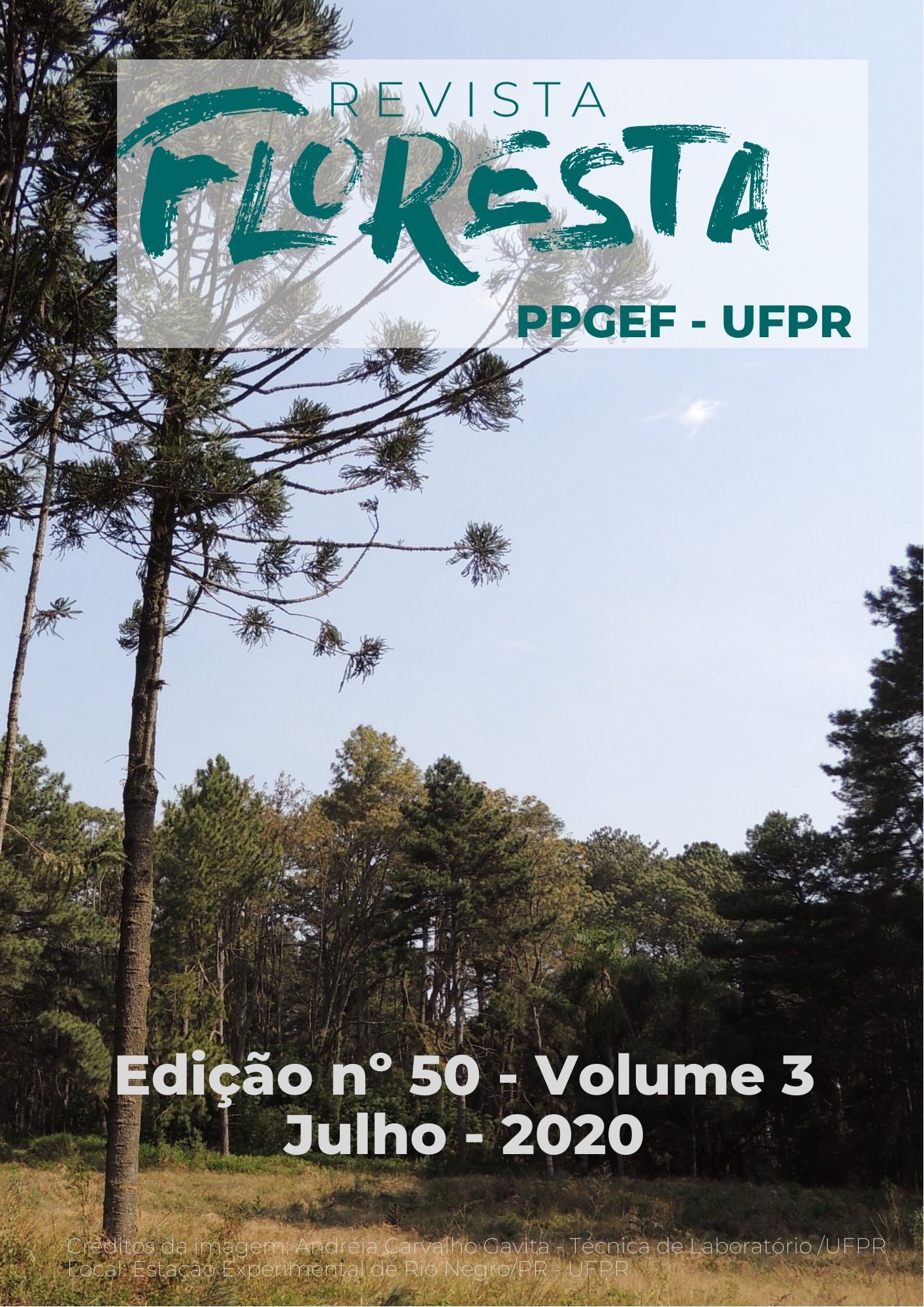CAN ARAUCARIA FOREST REMNANTS REGENERATE AFTER 70 YEARS OF ANIMAL HUSBANDRY? A CASE STUDY ON CAÍVAS IN SOUTHERN BRAZIL
DOI:
https://doi.org/10.5380/rf.v50i3.64248Palavras-chave:
silvopastoral systems, traditional forest management, Ilex paraguariensis, conservation by use.Resumo
In Southern Brazil, forest fragments are commonly used for agroforestry systems (AFS) - called caívas - focused on erva-mate and livestock production. Although the caívas have helped maintain forest cover, there is a general lack of understanding of the effects of this system on species diversity and their potential for ecological restoration. Aiming to contribute to a better understanding of the forest dynamics (trees and regeneration) of these AFS, we present a six-year case study in which we monitored a caíva that has been used for animal husbandry for 70 years. We observe that forest management in the caíva modified the population structure mostly through reductions in the density of a few adult tree species. On the other hand, the potential regeneration shows consistent growth, including several species not found in the adult population. The caíva showed high levels of resilience in terms of regeneration, despite the extractive use of these remnants over several decades. This result demonstrates that the strategies used herein can help to restore forests with a dense and diverse forest cover within caívas. With the correct management of this regeneration potential, it is possible to maintain healthy and diverse forests that are being conserved through use.
Downloads
Publicado
Como Citar
Edição
Seção
Licença
Direitos Autorais para artigos publicados nesta revista são do autor, com direitos de primeira publicação para a revista. Em virtude da aparecerem nesta revista de acesso público, os artigos são de uso gratuito, com atribuições próprias, em aplicações educacionais e não-comerciais.A revista, seguindo a recomendações do movimento Acesso Aberto, proporciona acesso publico a todo o seu conteudo, seguindo o principio de que tornar gratuito o acesso a pesquisas gera um maior intrcambio global de conhecimento.
Conteúdos do periódico licenciados sob uma CC BY-NC-SA 4.0



